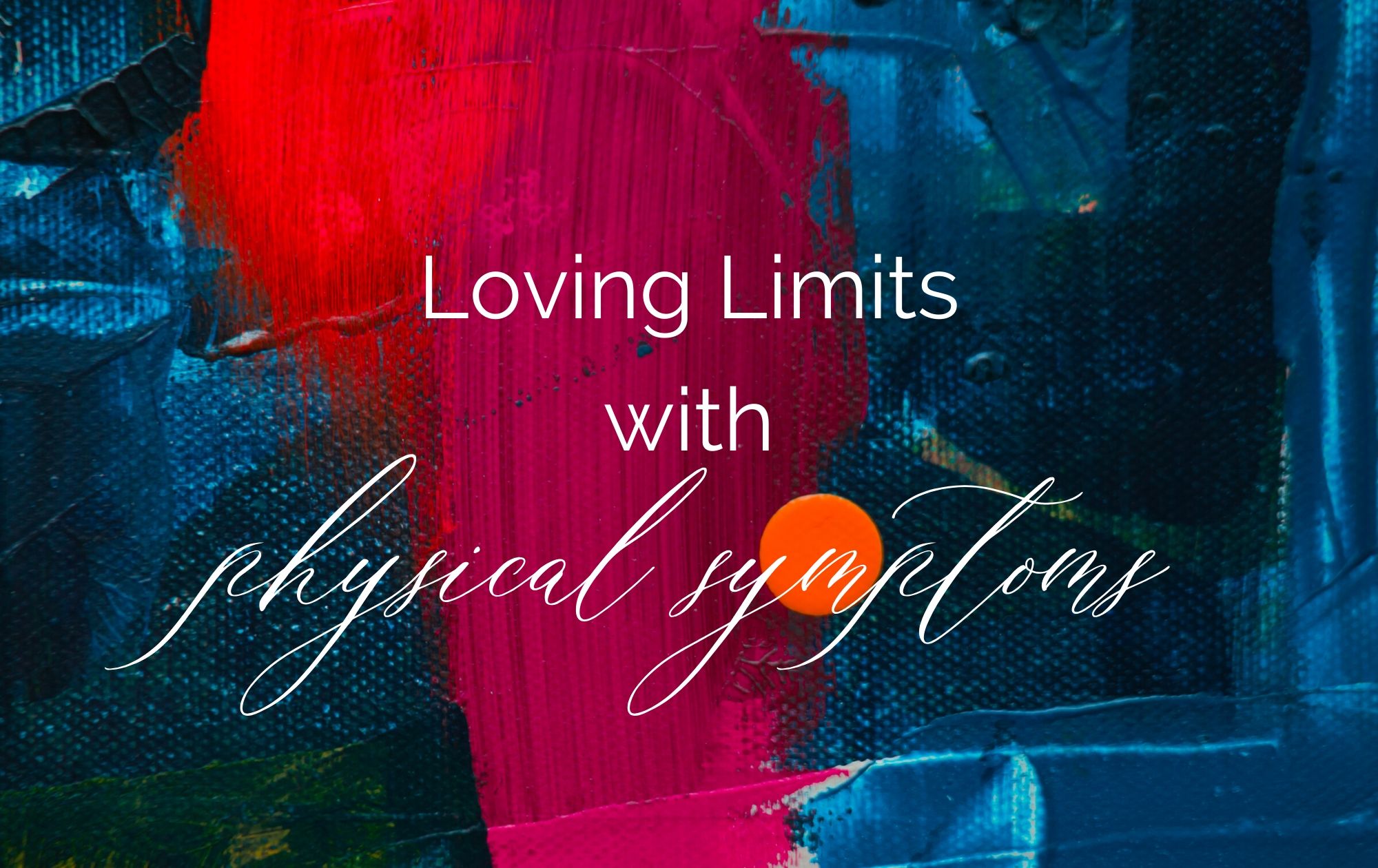You’ve probably heard me talk about all the different ways we can use Loving Limits.
Loving Limits in general are when we are saying a Neo No to a certain behaviour, action or manifestation, whilst saying a compassionate yes to hear the feelings or needs that lie underneath.
Loving Limits are not just about saying, “no.”
So, for example, if we set a Loving Limit to a child’s hitting, it’s really important that we hold loving compassion and willingness to hear the feelings that underly the hitting.
Or if we set a Loving Limit with a child’s repression mechanism such as a dummy or pacifier, that we have capacity and willingness to listen to the feelings that the repression mechanism had been holding in.
The same is the case if we set a Loving Limit with our own aggression (towards ourselves or others), or our own repression mechanisms (such as screens, shopping or chocolate), without listening lovingly to what lies underneath those.
If we say, “no” to the aggression or repression, without saying a loving “yes” to the expression of the feelings or needs underlying the aggression or repression, then those feelings will need to go somewhere else. Sometimes that can lead to the feelings burying themselves even more deeply, or the aggression escalating.
This also is the case with Loving Limits with physical symptoms.
In the MM approach, physical symptoms are expressions of something. Symptoms are the soul expressing itself. Often they are trying to meet a need or calling, express some unexpressed feelings, or indicate something that isn’t being heard or acknowledged.
If we say, “no” to the symptoms but aren’t willing to say “yes” to understanding what they are trying to communicate, or what need they’re aiming to meet, we also risk sending the feelings and needs deeper and the possibility of even bigger symptoms as what needs to be spoken, to speak more loudly.
So, for example, if I feel some sensations of a cold or ‘flu coming, and I don’t want to get that cold or flu, I will set a Loving Limit. But I will make sure that I say a big “yes” to what the cold or flu was wanting to bring me. “I’m not willing to get a cold, and I am willing to hear what feeling the cold is wanting me to feel, or meet the need that having the cold would meet.”
Many years ago, I would notice that a cold would be trying to get me to rest. But I didn’t want to get the cold and rest, I just wanted to heed the need to rest. So I rested, rather than get the cold. Resting without having a cold is way more enjoyable for me than resting whilst having a cold.
I also became aware, over many years, that getting a cold or flu often matched very particular feeling states. A flu with aching was a direct feeling match to what I was aching for. Running eyes often matched unexpressed tears. Feeling lonely and in desperate need of care often expressed little parts of me who felt lonely and who needed care.
When I first started experimenting with not being willing for certain symptoms, I learnt very quickly to have a lot of awareness around what I said. I remember one very specific time when I said “no” to a particular symptom without realising the importance of saying “yes” to what it was trying to communicate, and what I believed that symptom meant, and that had very serious consequences.
From then on, I knew that symptoms are things to not think of lightly, and that trying to get rid of them without first listening could be dangerous.
Nowadays, I blend compassionate listening to symptoms, particularly in a sense of embodied compassion and tender love from my Inner Loving Mother, with Loving Limits to others, where I’m clear that I’m willing to fully listen to what they are telling me.
If you want to have a community of support where you can deepen your lived embodied practice of the Lovingness and Willingness Practices and Psychospiritual Parenting and ReParenting, doors are open for a few more days for my Marion Method Immersion.
